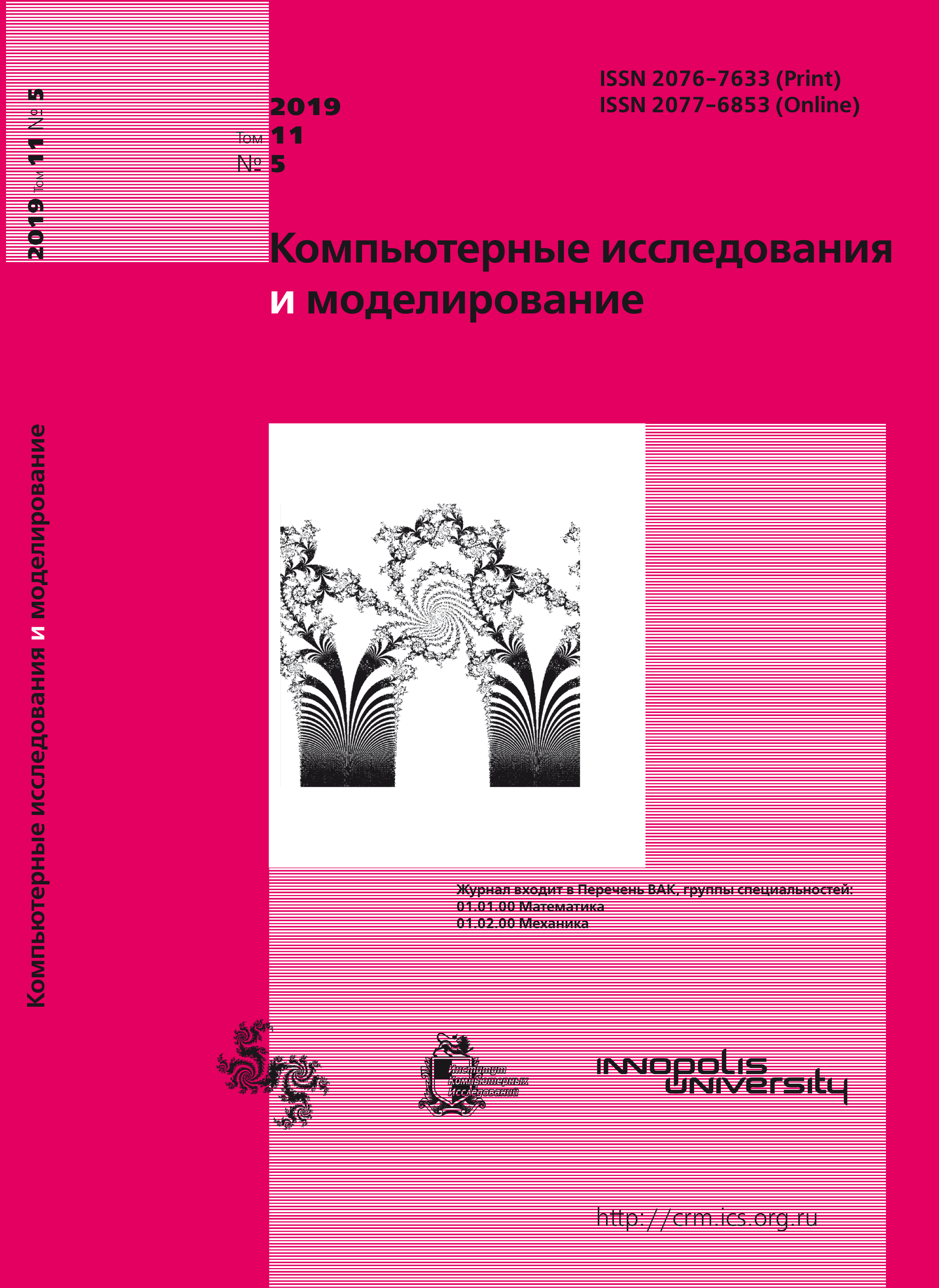All issues
- 2024 Vol. 16
- Issue 1 (special issue)
- 2023 Vol. 15
- 2022 Vol. 14
- 2021 Vol. 13
- 2020 Vol. 12
- 2019 Vol. 11
- 2018 Vol. 10
- 2017 Vol. 9
- 2016 Vol. 8
- 2015 Vol. 7
- 2014 Vol. 6
- 2013 Vol. 5
- 2012 Vol. 4
- 2011 Vol. 3
- 2010 Vol. 2
- 2009 Vol. 1
Mathematical model of political differentiation under social tension
 pdf (230K)
pdf (230K)
We comsider a model of the dynamics a political system of several parties, accompanied and controlled by the growth of social tension. A system of nonlinear ordinary differential equations is proposed with respect to fractions and an additional scalar variable characterizing the magnitude of tension in society the change of each party is proportional to the current value multiplied by a coefficient that consists of an influx of novice, a flow from competing parties, and a loss due to the growth of social tension. The change in tension is made up of party contributions and own relaxation. The number of parties is fixed, there are no mechanisms in the model for combining existing or the birth of new parties.
To study of possible scenarios of the dynamic processes of the model we derive an approach based on the selection of conditions under which this problem belongs to the class of cosymmetric systems. For the case of two parties, it is shown that in the system under consideration may have two families of equilibria, as well as a family of limit cycles. The existence of cosymmetry for a system of differential equations is ensured by the presence of additional constraints on the parameters, and in this case, the emergence of continuous families of stationary and nonstationary solutions is possible. To analyze the scenarios of cosymmetry breaking, an approach based on the selective function is applied. In the case of one political party, there is no multistability, one stable solution corresponds to each set of parameters. For the case of two parties, it is shown that in the system under consideration may have two families of equilibria, as well as a family of limit cycles. The results of numerical experiments demonstrating the destruction of the families and the implementation of various scenarios leading to the stabilization of the political system with the coexistence of both parties or to the disappearance of one of the parties, when part of the population ceases to support one of the parties and becomes indifferent are presented.
This model can be used to predict the inter-party struggle during the election campaign. In this case necessary to take into account the dependence of the coefficients of the system on time.
Indexed in Scopus
Full-text version of the journal is also available on the web site of the scientific electronic library eLIBRARY.RU
The journal is included in the Russian Science Citation Index
The journal is included in the RSCI
International Interdisciplinary Conference "Mathematics. Computing. Education"






